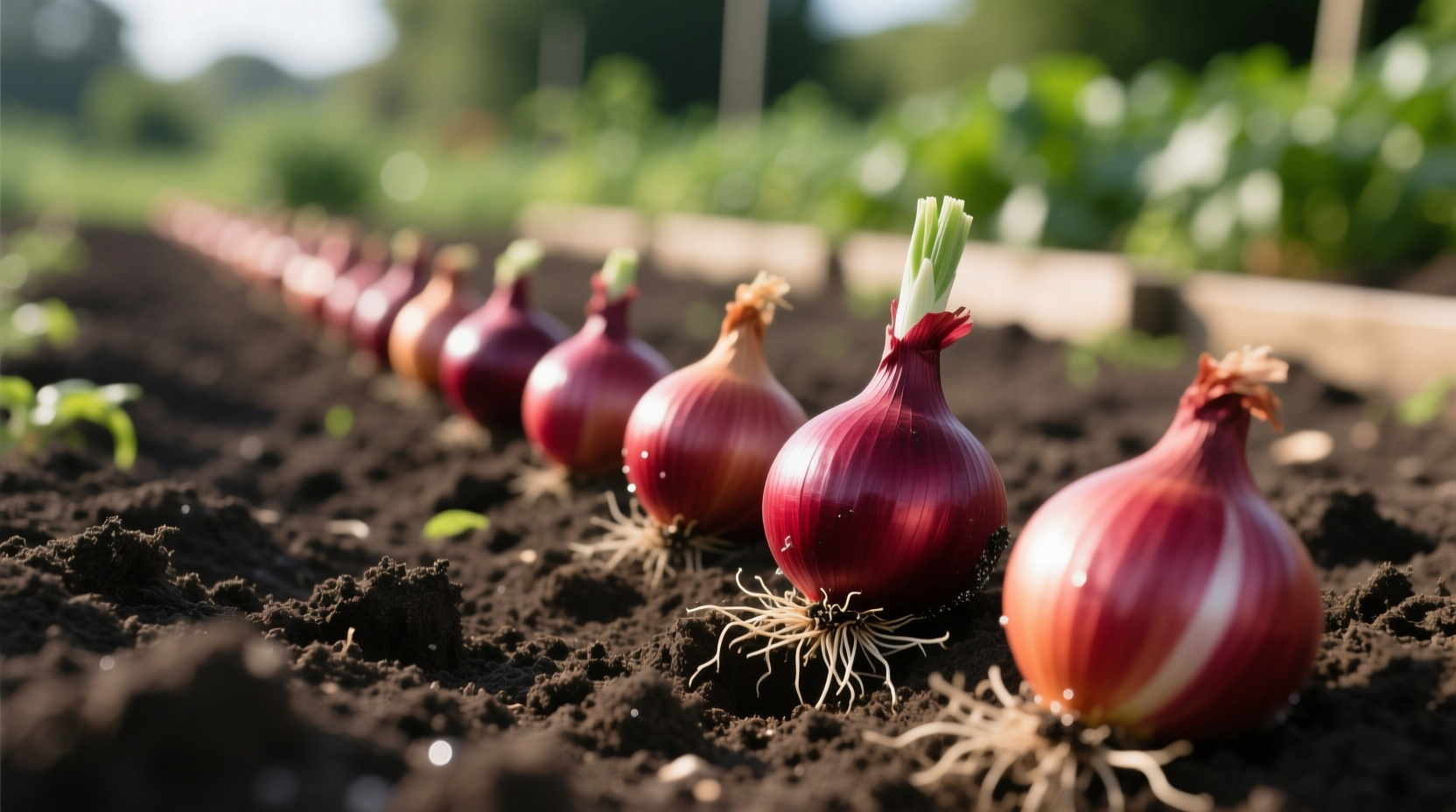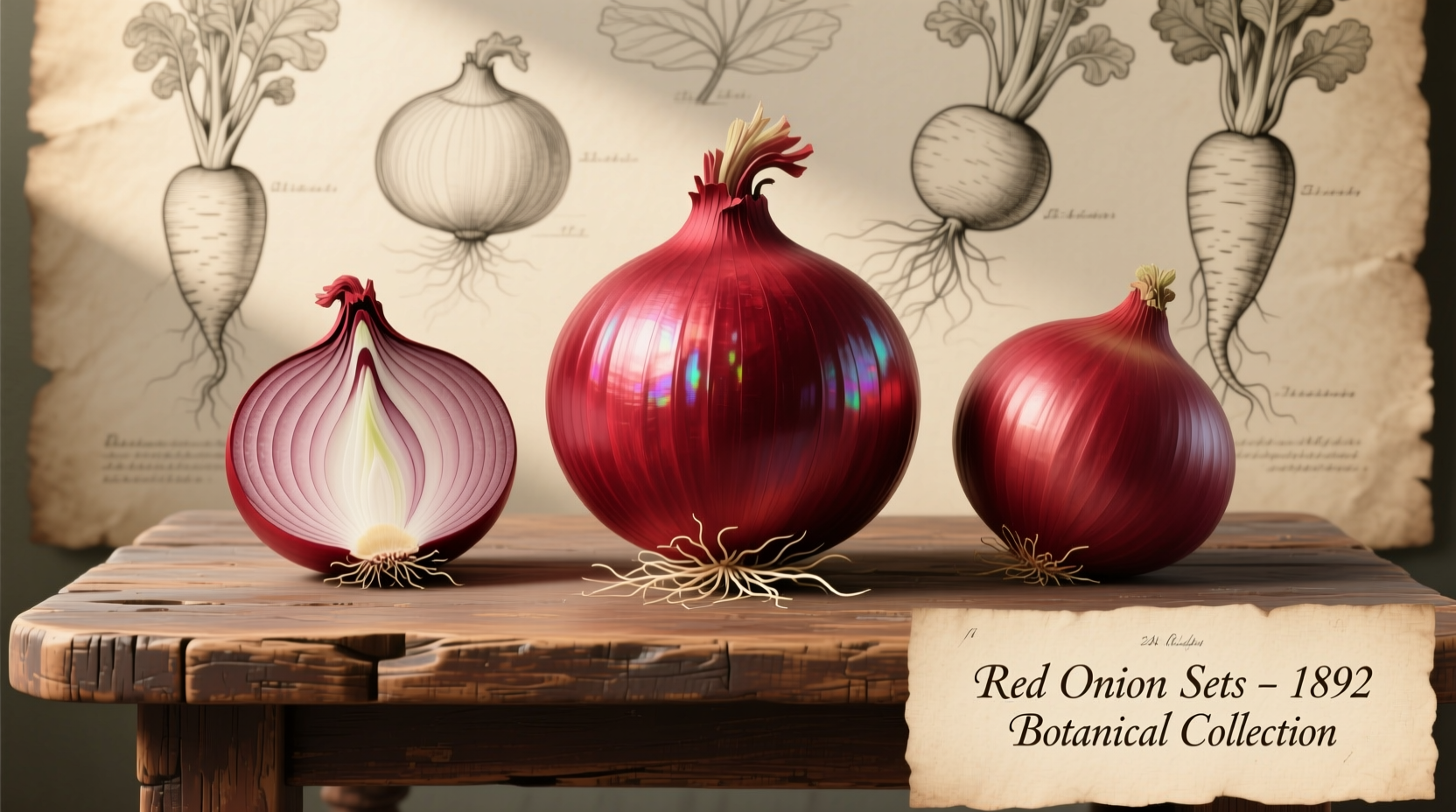Red onion sets offer home gardeners the simplest path to a bountiful onion harvest. Unlike seeds that require indoor starting or transplants that demand careful handling, these small, partially-grown bulbs provide a head start that significantly increases your chances of success. Understanding how to properly select, plant, and care for red onion sets transforms your gardening experience from frustrating to fruitful.
What Exactly Are Red Onion Sets?
Red onion sets represent a middle ground between seeds and mature plants. These are small, immature red onions (typically 1/2 to 1 inch in diameter) that were grown from seed the previous season, then harvested and dried before reaching full size. Gardeners plant these dormant bulbs, which quickly resume growth when conditions are right.
The primary advantage of sets over seeds? Speed and reliability. While red onion seeds can take 100-120 days to mature, sets typically produce harvestable bulbs in just 70-90 days. They're also more cold-tolerant than transplants, making them ideal for early spring planting when frost remains a possibility.
| Planting Method | Time to Harvest | Difficulty Level | Best For |
|---|---|---|---|
| Red onion sets | 70-90 days | Easy | Beginners, short-season climates |
| Seeds | 100-120 days | Difficult | Experienced gardeners, specific varieties |
| Transplants | 80-100 days | Moderate | Gardeners wanting larger bulbs |
This comparison clearly shows why red onion sets dominate home gardening. Their forgiving nature makes them perfect for first-time growers while still delivering excellent results for seasoned gardeners.
Optimal Planting Timeline for Red Onion Sets
Timing determines your red onion success more than almost any other factor. The ideal planting window varies significantly by climate zone, creating distinct regional considerations:
- Cold climates (Zones 3-5): Plant as soon as soil can be worked in spring (late March to mid-April), when soil temperature reaches 40°F (4°C)
- Temperate climates (Zones 6-7): Late February to early April planting
- Warm climates (Zones 8-10): Fall planting (October-November) for spring harvest
Planting too early risks rot in cold, wet soil, while planting too late reduces bulb size as summer heat arrives. The USDA Plant Hardiness Zone Map provides precise regional guidance for determining your optimal planting window.
Step-by-Step Planting Guide
Follow these professional techniques for maximum red onion set success:
- Soil preparation: Amend soil with 2-3 inches of compost and work to 8-10 inch depth. Red onions prefer slightly acidic to neutral soil (pH 6.0-7.0).
- Set selection: Choose firm, dry sets without sprouts or mold. Larger sets (3/4 inch) produce bigger bulbs but may bolt more easily.
- Planting depth: Position sets with the pointed end up, 1-2 inches deep in heavy soil, 2-3 inches in sandy soil.
- Spacing: Allow 4-6 inches between sets in rows 12-18 inches apart for standard bulbs. For green onions, plant closer (2-3 inches).
- Watering: Water thoroughly after planting, then maintain consistent moisture (1 inch per week) without saturation.
Pro tip: Some gardeners soak sets in compost tea for 15 minutes before planting to boost early growth. The University of Minnesota Extension confirms this practice can improve establishment in challenging conditions.

Avoiding Common Red Onion Set Problems
Even with proper planting, red onion sets face several challenges. Understanding these context-specific limitations prevents disappointment:
- Bolting prevention: Cold snaps below 45°F (7°C) after sets begin growing can trigger premature flowering. Choose bolt-resistant varieties like 'Red Zeppelin' or 'Candy' in unpredictable climates.
- Soil drainage: Heavy clay soils increase rot risk. Raised beds improve drainage in problem areas.
- Day length sensitivity: Red onions are long-day plants requiring 14+ hours of daylight to form bulbs. Southern gardeners should select intermediate-day varieties.
Harvesting and Storage Techniques
Knowing when to harvest red onions ensures maximum flavor and storage life. Watch for these indicators:
- Toppling foliage (when 50% of leaves fall over)
- Neck softening at the bulb base
- Outer skin becoming papery and dry
After harvesting, cure onions in a warm, dry, well-ventilated area for 2-3 weeks. Properly cured red onions store for 2-3 months at 32-40°F (0-4°C) with 65-70% humidity. The Oregon State University Extension confirms that curing significantly extends storage life by forming protective outer layers.
Maximizing Your Red Onion Harvest
For gardeners seeking larger bulbs and better flavor, implement these advanced techniques:
- Side-dress with nitrogen fertilizer when tops reach 6 inches tall
- Stop watering 2-3 weeks before harvest to improve storage quality
- Remove flower stalks immediately if bolting occurs
- Rotate planting location annually to prevent disease buildup
Remember that red onion sets naturally produce smaller bulbs than transplants, typically reaching 2-3 inches in diameter. If you prefer larger bulbs, consider starting with transplants next season while using sets for a quicker green onion harvest.











 浙公网安备
33010002000092号
浙公网安备
33010002000092号 浙B2-20120091-4
浙B2-20120091-4